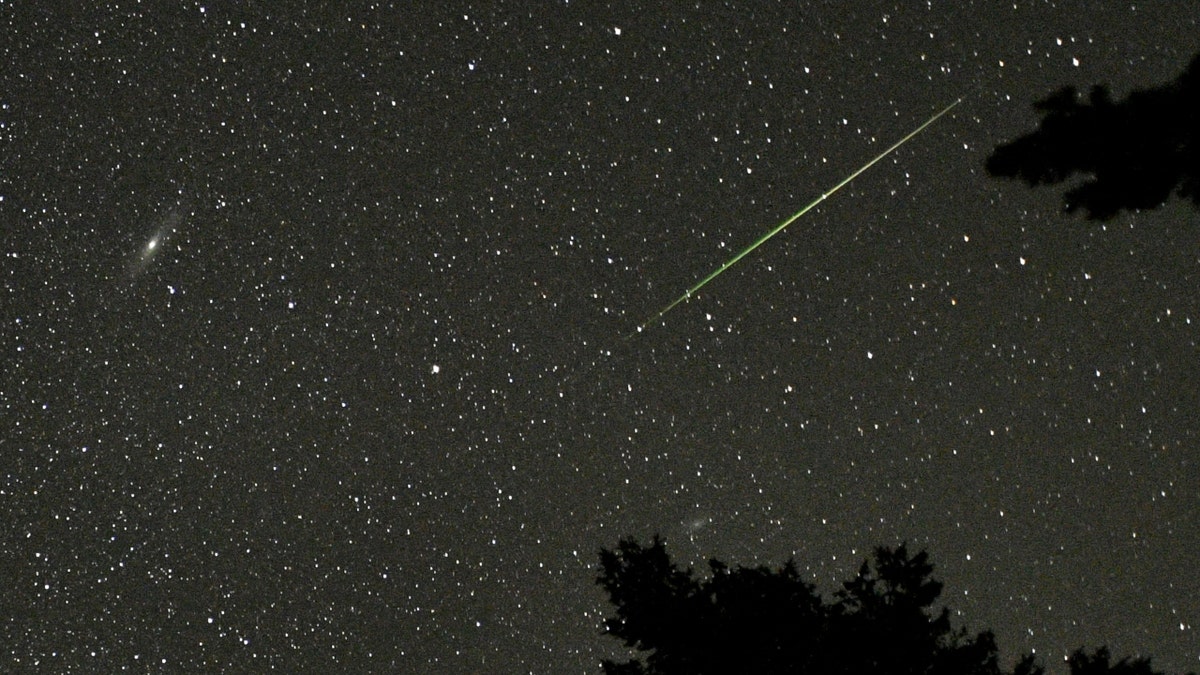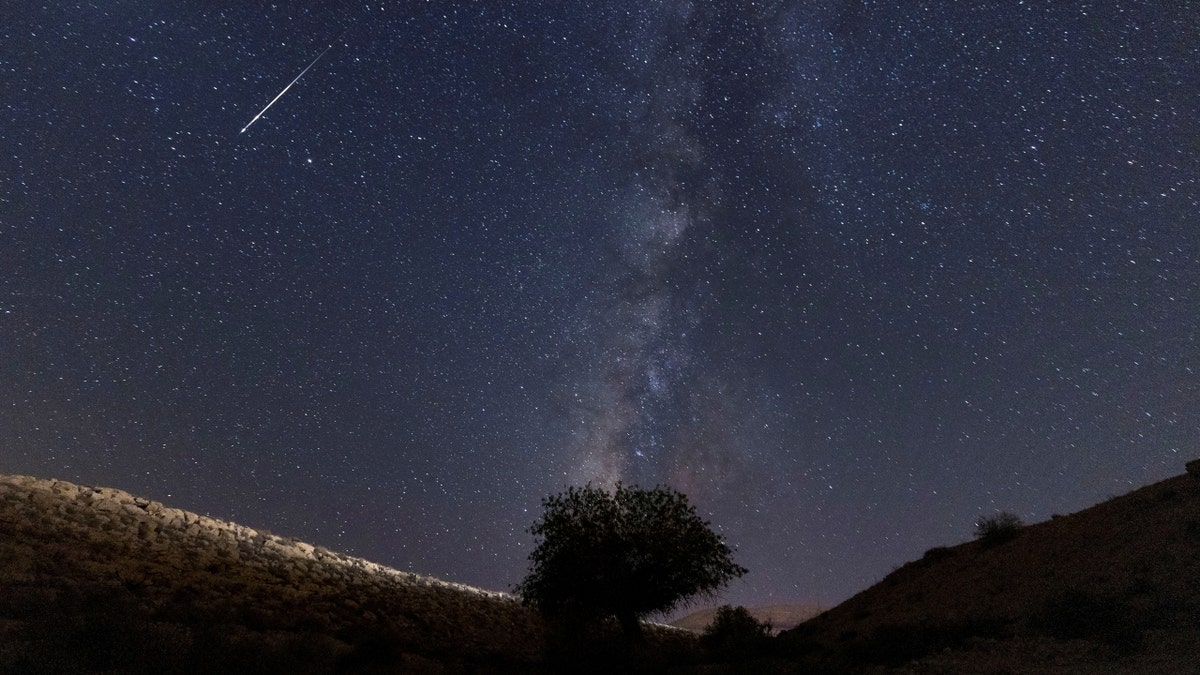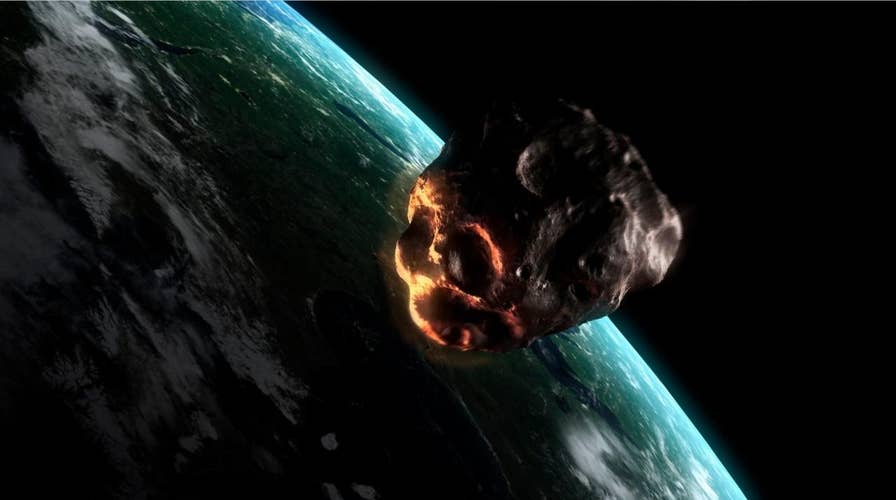Study: Giant asteroid strike 13,000 years ago had 'global consequences’
A giant asteroid hit earth 13,000 years ago and had 'global consequences’ causing mass extinction and more.
The Perseid meteor shower, usually one of the most vivid showers visible each year, will peak on Friday and Saturday.
However, according to NASA, the full moon will impact the view.
"Sadly, this year’s Perseids peak will see the worst possible circumstances for spotters," NASA astronomer Bill Cooke, who heads the Meteoroid Environment Office at NASA’s Marshall Space Flight Center, said in a statement.
"Most of us in North America would normally see 50 or 60 meteors per hour," he said, "but this year, during the normal peak, the full moon will reduce that to 10-20 per hour at best."
PERSEID METEOR SHOWER BEGINS: WHEN, WHERE TO SEE IT

A Perseid meteor is seen near the Andromeda Galaxy over Rocky Mountain National Park in Colorado in the early morning hours of Aug. 12, 2018. (Stan Honda/AFP via Getty Images)
The moon is brighter than anything else in the night sky.
It will wash out everything but the very brightest Perseids.
The shower will begin to wane on Aug. 21 and 22, stopping entirely by Sept. 1.
SHAUN THE SHEEP WILL BE THE FIRST 'ASTRONAUT' TO FLY ON THE ARTEMIS I LUNAR MISSION

A meteor streaks past stars in the night sky during the annual Perseid meteor shower at the Negev Desert in southern Israel, Aug. 13, 2021. (Reuters/Amir Cohen TPX Images of the Day)
The Perseids occur when Earth crosses through the stream of debris remnants of the comet 109P/Swift-Tuttle and its meteors – most of which are pea-sized – create bright "shooting stars" as they burn up in the planet's atmosphere.
The meteors appear to radiate from the constellation Perseus, or the shower's "radiant," but can be seen streaking across the sky anywhere at a speed of 37 miles per second.
The shower is also known for its fireballs, which can last longer than an average meteor streak.

A Perseid meteor is seen over Rocky Mountain National Park in Colorado early on Aug. 13, 2018, competing with lights from vehicles on nearby roads. (Stan Honda/AFP via Getty Images)
Swift-Tuttle orbits the sun every 133 years.
CLICK HERE TO GET THE FOX NEWS APP
The comet itself won't be visible to Earth again until 2125.
NASA says there is no chance the planet will soon run into the comet.





















